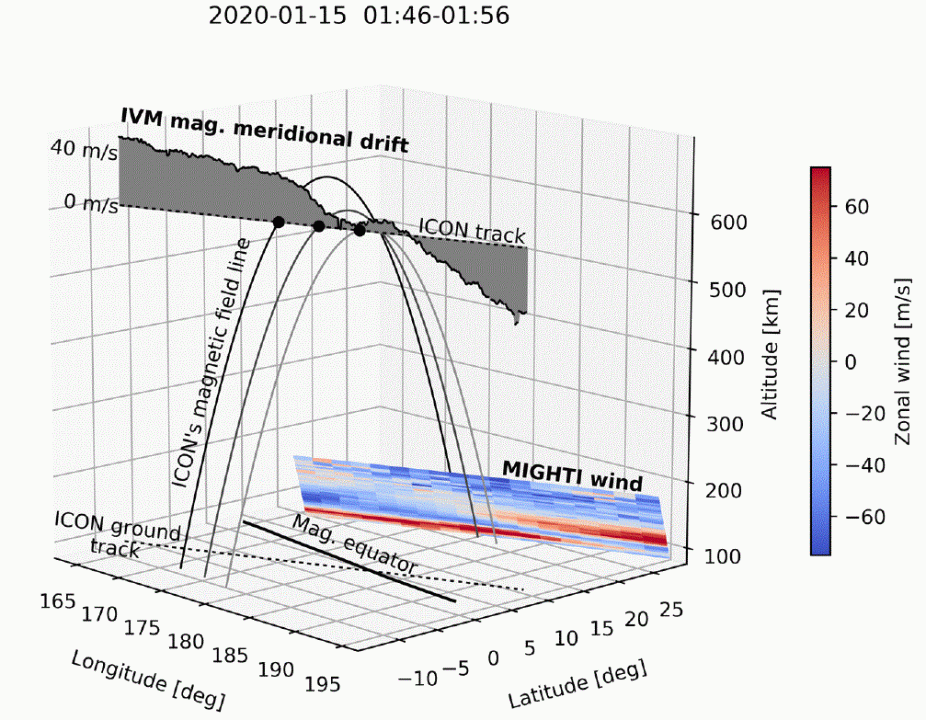Publication: Nature; First HAO Author: Astrid Maute; Authors as listed in article: T.J. Immel, B.J. Harding, R.A. Heelis, A. Maute, J.M. Forbes, S.L. England, S.B. Mende, C. Englert, R. Stoneback, K.Marr, et al
Earth’s equatorial ionosphere exhibits significant and unpredictable day-to-day variations in density and morphology. This presents difficulties in preparing for adverse impacts on technological systems even 24 hours in advance. This behavior is now theoretically understood as a manifestation of thermospheric weather, where conditions in the upper atmosphere respond strongly to changes in the spectrum of atmospheric waves that propagate into space from the lower and middle atmosphere, modifying the electrodynamic environment that exerts control over the creation of plasma.

A schematic of ICON observations indicating the in-situ ion drift observation at ICON altitudes of ~590km on a field line (black lines) and the horizontal neutral wind (contour plot) observed in the 100-200km range in the vicinity of the field line footpoint.
The NASA Ionospheric Connection Explorer (ICON) makes the first coordinated space-based observations of the wind-driven dynamo and the plasma state to understand the relation of the plasma environment to the thermospheric weather below. Here we show the first direct measurements of the effects of a wind-driven dynamo in space, where a clear relationship is found between the vertical plasma velocities measured at the magnetic equator near 600 km and the thermospheric winds much farther below, with substantial correlations found between the plasma velocity and thermospheric winds during each of several successive precession cycles of the observatory’s orbit. Prediction of thermospheric winds in the 100 – 150 km range emerges as a key to improved prediction of the Earth’s plasma environment.